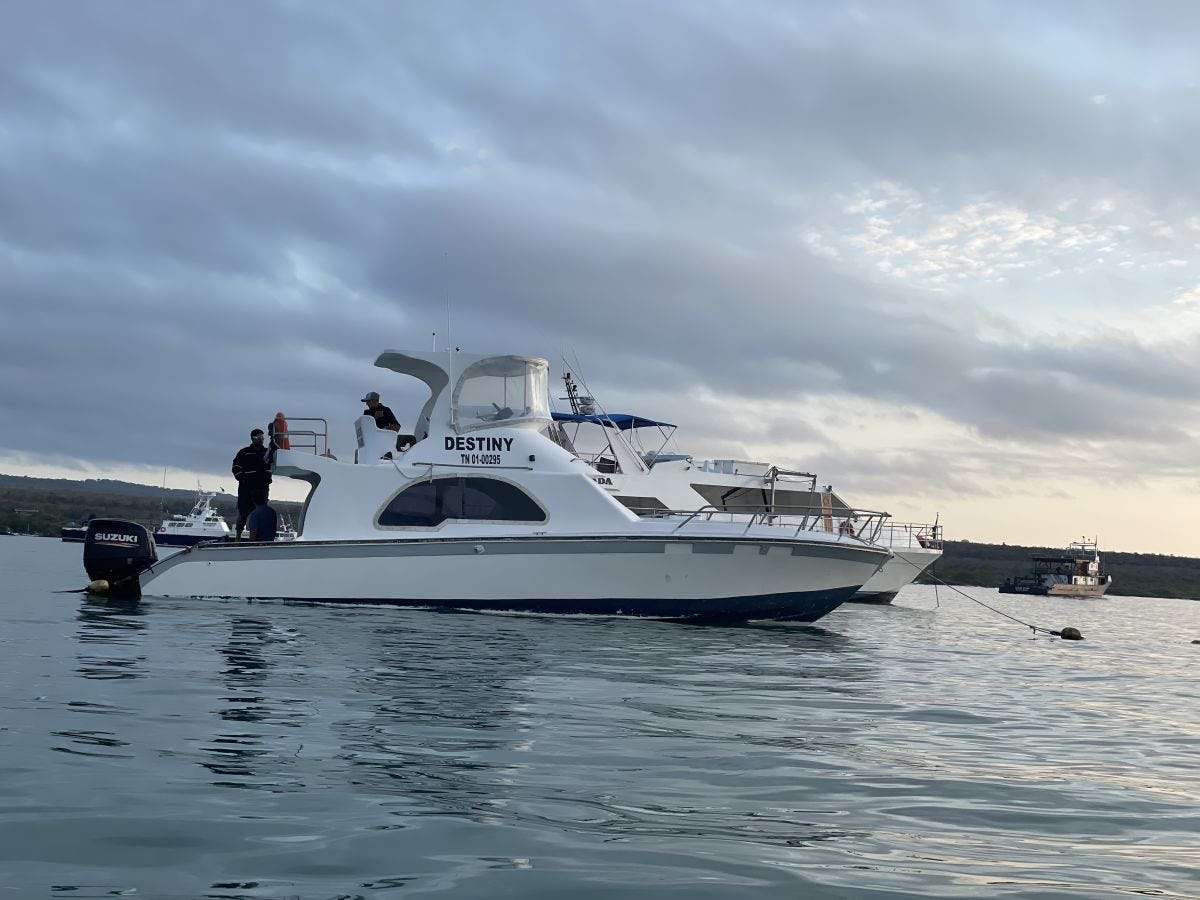Stevens Student Ingenuity = Quieter, Greener Ferries for the Galápagos Islands
Stevens’ collaboration with a coastal technical university in Ecuador is helping to create smoother — and lower-impact — rides around one of the world’s most intriguing island groups
The Galápagos Islands, set 500 miles due west off the coast of Ecuador in the open Pacific Ocean, are a near-mythic place.
Sea lions rest casually on dockside park benches, sunning themselves, then waddle through towns. Giant tortoises migrate upslope in fall, searching for grazing areas in the more humid uplands. Green sea turtles lay eggs on quiet beaches. Mile-high volcanoes frequently erupt, but gently.
But the island group is also a travel hotspot. Its 25,000 year-round residents see a swell of 100,000 or more tourists annually, keeping the islands’ four-island ferry system busy.
Now a new collaboration between Stevens and the Ecuadorian government is helping reimagine and redesign those ferries as a new generation that will run quicker, smoother — and greener.
Here’s how it’s happening.
Testing hull shapes, making waves
The four inhabited Galápagos Islands (out of 21 total) are connected by a series of basic ferries that run twice daily from a hub port on Santa Cruz Island. But powerful Pacific waves can make for rough seas during the two-hour trips between the islands, particularly during winter.
“Surveys regularly report that typically 20%, and up to 40%, of passengers experience seasickness on winter journeys,” says ocean engineering professor Raju Datla, who directs design and testing work for the project in Stevens' Davidson Lab supported in part by a United Nations Development Program Ecuador grant.
To help reduce the ferries' carbon footprint while also making the trips more comfortable, Datla works with a three-member Stevens student team and a team from ESPOL (Escuela Superior Politécnica del Litoral), an Ecuadorian research university, to design and test new hull designs for the next generation of those ferries.
“The islands currently use a single-hull craft," explains Datla. "Our students designed an alternative, a twin-hulled catamaran-style ferry, to see if that would be more seaworthy and efficient."
The single-hull and catamaran-style crafts each weigh approximately the same, and are each designed to carry approximately the same number of passengers. But how do they stack up against each other, both in their ability to ride the rough seas and in power consumption?
To address the comfort question, Kate Killian ’23, Tristan Henningsen ’23 and Zach Martis ’23 sought to find out, devoting their entire senior years to the project. Inside Davidson Lab, the trio places 1:9 scale models of the hulls, weighted to simulate passenger loads, into the lab’s main testing tank.
At the touch of a button, the miniature boats whizz about 50 yards directly south through the tank at surprisingly high speeds, raising spray but staying remarkably stable in the water as they cut through it. Sometimes they're tested in calm conditions, but waves of varying heights are also generated in the tank to simulate rough winter seas.
Sensors and cameras record location, drag, acceleration and other data in real time, sending it within moments to a computer monitor off to the side, where the students can instantly pore over new data points and graphics.
To address the environmental footprint of the ferries — now powered by gasoline-guzzling outboard engines — two potential new power sources for the propulsion system are being evaluated by the research team sponsored by the Ecuadorian government, says Ruben Paredes Ph.D. ‘13, an ESPOL faculty lecturer (and Stevens graduate) who is leading the project for ESPOL.
Hydrogen fuel cell technology offers the most power, explains Paredes, allowing the ferries to travel more quickly: up to 30 miles per hour at top speed. At Stevens’ suggestion, onboard banks of lithium batteries as a power source are also being tested.
“Lithium-powered ferries would travel a little less quickly than a fuel cell-powered craft, about 20 miles per hour at top speed,” Paredes notes, “and they must be recharged at the terminals. But there may be other advantages to lithium technology making this alternative easier to implement. We are still researching this question.
“Our decision will depend partly upon which hull design is selected, which is why our collaboration with this Stevens student team is so valuable.”




